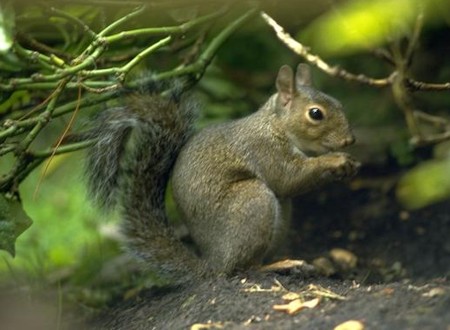
Over 250 species of woody plants at the UT Arboretum provide a natural habitat for many animals. The fruits, nuts, and berries produced by these plants are an important food supply for chipmunks, muskrats, squirrels and other small animals. Grasses and wildflowers are tasty treats for rabbits. Deer like to “prune” shrubs and will occasionally eat the bark off of tender new tree growth. However, the plant-animal relationship is not just one way. Animals help control insects and other pests that affect plant life. Such animals, as well as birds, are effective distributors of seeds that initiate new growth.
Mammal research projects by the Tennessee Wildlife Resources Agency, the UT Department of Forestry, Wildlife, and Fishes, and other agencies have been conducted at the Center. Recently, Mr. Gerry Middleton has been studying the presence and behavior of bats. Dr. Lisa Muller with the UT Department of Forestry, Wildlife and Fisheries is conducting a deer population study, focusing on the health, nutrition, and nuisance of the local herd. Lastly, Dr. Todd Freeberg, with the UT Department of Psychology, is conducting a long-term enclosed bird aviary project focused on chickadees, titmouse, and nuthatch predator-prey stimuli population dynamics.
Arboretum visitors have spotted the following animals:
White-tailed Deer, Coyote, Red Fox, Bobcat, Opossum, Eastern Cottontail Rabbit, Woodchuck, Eastern Gray Squirrel, American Beaver, Common Muskrat, Raccoon, Weasel, Striped Skunk, Eastern Mole, Eastern Chipmunk, Deermouse, and Bats. An undocumented visit by a Black Bear last spring was reported by a trail walker.
To view photos of these mammals, click on this link to the Tennessee Wildlife Resources Agency’s Watchable Wildlife web site.